Pulmonary Embolism
Pulmonary embolism (PE) is an extremely insidious complication of many illnesses that often develops in the postoperative and postpartum periods. Almost a third of sudden deaths are caused by a blood clot blocking a pulmonary artery. This condition kills one in five people, with half of the victims taking their lives within the first few hours of the attack.

specialists

equipment

treatment
Causes and risk factors
The circumstances under which pulmonary embolism develops vary. Several primary causes stand out:
- Deep blood clots in the legs (up to 90%). These clots often form in the calf muscles and are accompanied by inflammation of the veins. Less commonly, clots form simultaneously in both small and large veins of the leg.
- Obstruction of the main veins of the abdomen and lower extremities.
- Heart and vascular diseases – these contribute to the formation of clots and their travel to the lungs. Examples include ischemia, heart defects, high blood pressure, infections of the lining of the heart, changes in the structure of the heart muscle, and autoimmune inflammation.
- Cancerous tumors, especially those of the pancreas, stomach, and bronchopulmonary system.
- Increased blood clotting due to impaired immune defenses.
- Antibodies that attack the body's own cells affect the blood's ability to circulate freely, increasing the incidence of blood clots.
Infections that have spread throughout the body can also create conditions conducive to blood clots.
Etiology
Pulmonary embolism occurs when a piece of a blood clot formed elsewhere in the body travels to the pulmonary artery and disrupts blood flow. This occurs when blood thickens and flows poorly through the vessels, creating favorable conditions for clot formation.
It can be caused by a sedentary lifestyle, prolonged sitting or lying down, smoking, excess weight, heart and vascular problems, as well as pregnancy and medications that affect blood composition. Many diseases, such as diabetes, malignant tumors, and genetic mutations that disrupt the coagulation system, also increase the risk of blood clots that can block a vital vessel. Surgery, bone fractures, and traumatic procedures also increase the risk of blood clots that can block a vital vessel.
Risk factors
Pulmonary thrombosis most often affects those with risk factors such as:
- Physical trauma
- Prior surgery
- Medical procedures involving vascular access
- Long-term immobility
- Low physical activity
- Long-distance travel
- Overweight
- Pregnancy, childbirth, and postpartum recovery
- In vitro fertilization
- Long-term use of birth control pills or diuretics
- Dehydration
- Metabolic disorders
- Older age
- Bad habits
- Hereditary predisposition to the formation Blood clots
- Increased blood viscosity
- Lack of anticoagulant elements
- Blood stagnation in the veins associated with cardiovascular or respiratory problems
- Cholesterol deposits, inflammation of the vein walls, varicose veins, strokes, high blood pressure
- Installation of implants or replacement of a heart valve with artificial materials
- Autoimmune diseases, such as lupus erythematosus
- Intestinal pathology known as Crohn's disease
- Chemotherapy and radiation treatment for cancer
The likelihood of dangerous situations associated with the formation of blood clots increases with age. Older people, starting from the age of forty, are at increased risk.
Pathogenesis and mechanism of development
Vascular obstruction is caused by specific blood clots that are loosely attached to the vein walls. A broken-off fragment travels through the heart with the blood and reaches the pulmonary artery, blocking its flow. The outcome of this event depends on the size and number of clots, the respiratory response, and the body's ability to dissolve blood clots.
Small, detached clots often cause no symptoms, but larger clots can impair the blood supply to individual areas or entire parts of the lung, depriving them of oxygen. The body attempts to correct the situation by compressing the blood vessels and increasing pressure in the pulmonary arteries.
The heart is forced to work harder to overcome the increased load. Small obstructions in the lungs may not cause any changes in blood flow, but approximately one in ten cases ends tragically—severe conditions develop, including the loss of a piece of the lung and subsequent pneumonia.

Classification and stages of development
Although pulmonary embolism classifications are diverse, their application in practice is difficult. The main approaches are based on the extent of vascular damage, the rate of progression, and the level of health threat.
There are three types of damage:
- Massive form, when large thrombi clog the main branches of the arteries, disrupting more than half of the blood flow. This situation is critical: the heart experiences colossal overload, the patient suffers a severe drop in blood pressure and rapid heartbeat, which can result in shock and the risk of death.
- Damage to the lobar or segmental branches of the pulmonary artery. In this type of PE, the thrombus lodges in the medium-sized branches of the arteries, occupying a quarter to half of the entire vascular network. Despite pronounced symptoms, normal blood pressure maintains relative stability.
- Damage to small branches of the pulmonary artery. A small thrombus lodges in small branches, affecting less than a quarter of the vessels. Such cases are usually bilateral, often cause minimal symptoms, and are recurrent.
The rate of onset of the disease varies from fulminant to protracted; less commonly, the pathology is chronic. The degree of danger is assessed as follows: the most severe form occurs in one in six to three patients, a moderate form is diagnosed in half of patients, and a mild form is found in approximately one in seven patients.
Today, a special PESI scale, which takes into account a number of indicators, is key to assessing recovery prospects. Based on the calculation, the patient is classified into five risk classes, where the probability of dying within the next 30 days ranges from one to 25%.

Clinical picture and symptoms
Pulmonary embolism presents with very confusing symptoms, often mimicking lung or heart disease. There are situations where the disease is completely undetectable and leads to sudden death without any warning symptoms. The severity of the disease depends on the size of the clot and the degree of blockage of blood flow.
Even a small, previously unnoticed blood clot, once lodged in a pulmonary artery, can seriously impair well-being. Symptoms include dizziness, shortness of breath, loss of strength, decreased blood pressure, chest pain that worsens with inhalation, panic from lack of oxygen, and coughing.
In particularly severe situations, bloody sputum, loss of consciousness, bluish discoloration of the skin, and a sharp drop in blood pressure are possible. The victim's health deteriorates immediately, and emergency medical attention is required immediately.
Remember: if you suspect a thromboembolism, call an ambulance immediately. While the ambulance is on its way, keep the patient calm, remove tight clothing from the chest, and ventilate the room.
Since vascular occlusion increases the load on the right side of the heart, right ventricular failure may develop, characterized by symptoms such as bluish skin, swelling of the arms, legs, and face, difficulty breathing at night, rapid heartbeat, heart pain, and ascites.
Signs of thromboembolism appear suddenly, sometimes within hours or days. Please note: symptoms can resemble asthma, heart attack, or acute pulmonary inflammation.
Diagnostics
The choice of diagnostic methods for pulmonary embolism is determined by the likelihood of diagnosis, the patient's condition, and the resources of the healthcare facility.
Diagnosis involves sequential stages. First, the clinical probability of disease onset is assessed, then the D-dimer protein concentration is determined, the indicators of which are important for confirming or excluding the suspicion of thromboembolism.
Next, a chest CT scan is prescribed with the administration of a special drug to improve visibility. Lung scintigraphy is also used, which allows for an assessment of blood distribution within the organs by introducing a minimal dose of radioisotopes into the body and monitoring them on a camera screen.
Additionally, angiopulmonography can be performed - a direct study of the state of the pulmonary vessels by injecting a special solution and observing its passage through the arteries. Magnetic resonance imaging can be used for a detailed examination of the vessels and the detection of pathologies.
An echocardiogram performed at the patient's bedside is also recommended if there is a high risk of thromboembolism. Finally, a compression ultrasound of the veins can detect blood clots in the legs, which are a potential source of embolism.
Laboratory diagnostic methods
Tests involving laboratory analysis of biological material play an important role in the diagnosis of pulmonary embolism. They help doctors confirm the diagnosis and prescribe the appropriate treatment.
The main test is D-dimer levels. A complete blood count, biochemistry, and coagulation profile are also helpful. A complete blood count will reveal the presence of inflammation or anemia, biochemistry will provide insight into the condition of the liver and kidneys, and a coagulation profile will assess blood clotting.
All laboratory data are compared with the patient's complaints, examination results, and instrumental examinations. Only a comprehensive approach allows for an accurate diagnosis and optimal treatment.
D-dimer Levels
A small protein fragment called D-dimer is produced by the body when blood clots are broken down. A high D-dimer level indicates the presence of blood clots in the vessels, indirectly confirming a diagnosis of thromboembolism.
However, an elevated D-dimer does not always indicate thromboembolism. Its concentration increases during pregnancy, trauma, inflammation, and a number of other conditions. Therefore, this indicator is considered in conjunction with other test results.
Instrumental diagnostic methods
Doctors use various tools and devices to look inside the body and determine the cause of poor health. Ultrasound, X-rays, and computed tomography (CT) scans are many ways to better examine internal organs and blood vessels.
Each of these specialized diagnostic devices provides invaluable information about the patient's body, and together they help doctors build a complete picture of the patient's condition and make the right treatment decisions.
Electrocardiography
ECG changes associated with pulmonary embolism are rare and do not clearly indicate this pathology. The most common signs of the disease, detectable by electrocardiography, are a rapid heartbeat and a specific P wave (called a P-pulmonale), indicating pressure on the right atrium.
Only one in five patients with pulmonary embolism exhibit signs of increased right ventricular workload, characteristic of acute cor pulmonale, so ECG data alone cannot be relied upon; further investigation is necessary.
Chest X-ray
A chest X-ray can reveal signs of increased pressure in the pulmonary vessels caused by thrombi. One of the signs is an upwardly raised side of the diaphragm, corresponding to the site of the lesion. Also visible is an enlarged right side of the heart and thickening of the lung bases.
Characteristic features include an enlarged right inferior artery, vascular consolidation, and decreased lung volume in some areas. If pulmonary infarction occurs, an unusual density pattern appears on the image, shaped like a triangle, with its apex directed toward the entrance of the main bronchi. The image also shows fluid accumulated in the pleural cavity on the same side where the lesion occurred.
Echocardiography
Echocardiography allows specialists to detect problems in the right side of the heart in cases of pulmonary embolism: it dilates, and the septum between the chambers shifts closer to the left ventricle. Signs of increased pressure in the pulmonary vessels and backflow of blood into the right atrium are often visible.
A more accurate picture is provided by a special type of examination called transesophageal echocardiography. It can detect blood clots directly within the heart chamber.
At the same time, doctors determine whether there are any associated heart conditions, such as an unclosed opening between the atria, called a patent foramen ovale. This affects blood circulation and can cause emboli to migrate into the vessels of the systemic circulation.
Spiral Computed Tomography
Spiral CT is a modern method of scanning internal organs, producing highly accurate images in a short time. The machine rotates around the patient's body, as if twisting in a spiral, hence the name.
To detect pulmonary embolism, a special substance is injected into a vein to improve the visibility of the vessels on the images. A computer collects the information, converting it into detailed images. These images clearly show whether there is a blockage in the arteries, the location of the clot, and the severity of the blood flow disruption.
Spiral CT is considered the primary method for diagnosing pulmonary embolism, as it quickly and accurately identifies pathological changes in the pulmonary vessels.
Ultrasound of the deep veins of the lower extremity
This is a safe and convenient way to examine the condition of the vessels without exposing the body to radiation. A special device transmits sound waves through tissue, returning a signal that is converted into a visual image on a monitor.
This method allows for the detection of blood clots that form in the veins of the legs, where most blood clots originate. If an ultrasound detects a clot, there is a real risk that it could travel and block a vessel in the lungs. This examination is accessible, painless, and widely used in the diagnosis of pulmonary embolism.
Ventilation-perfusion scintigraphy
This test helps detect areas of the lungs that are normally inflated but lack blood flow due to thromboembolic vascular occlusion. If the radioisotope distribution pattern is normal, the likelihood of pulmonary embolism is excluded by almost 90%.
However, impaired blood flow is also possible with other pathological conditions of the respiratory system. This diagnostic method is most often used when the patient cannot undergo CT scanning.
Pulmonary Angiography
Pulmonary angiography is the most reliable method for detecting embolic lesions, although it is associated with significant intervention in the patient's body, and in terms of information content, it is similar to CT scanning.
The diagnosis is considered definitive when the thrombus contours and a sharp rupture of a branch of the pulmonary artery are visualized. A presumptive diagnosis is based on the detection of severe stenosis of the pulmonary artery branches and delayed clearance of the radiocontrast agent.
Treatment of Pulmonary Embolism
When an acute episode of thromboembolism occurs, patients are admitted to the intensive care unit, where emergency medical care is provided. The most important components of the treatment process are ensuring adequate oxygen supply (artificial ventilation may be required). The patient is also prescribed a range of medications, including:
- Anticoagulant therapy to prevent further thrombus growth and restore vascular patency.
- Vasopressor medications to maintain blood pressure and hemodynamic stability.
- Thrombolitic intervention when indicated to dissolve the thrombus directly within the bloodstream.
- Analgesics to relieve pain.
- Antispasmodics to relieve spasms of the smooth muscles of the respiratory system.
- Antiarrhythmic therapy to correct cardiac arrhythmias.
If secondary infections, such as pneumonia or pulmonary infarction, develop, antibacterial treatment is additionally used. A specialist prescribes an individualized course of medication based on a detailed analysis of blood test results, the patient's current health status, and an assessment of the risk of potential side effects. After stabilization, the patient receives long-term rehabilitation therapy.
Anticoagulant Therapy
Special anticoagulant agents are used to prevent the formation of new venous thrombi. The initial stage of therapy involves the use of parenteral medications. Later, oral administration is switched to oral therapy.
The duration of anticoagulant treatment varies depending on the individual needs of the body, often lasting three months or longer.
Thrombolitic Therapy
Thrombolitic drugs are used to eliminate existing thrombi in the early stages of the disease. Their use helps improve the prognosis of the disease and restore circulatory properties of the blood.
The effectiveness rate of this approach is approximately 92%, however, the procedure is most beneficial only during the first two days after the onset of thrombosis. After this period, the effectiveness of the method decreases significantly.
Surgical Methods
In severe cases of thromboembolism, especially when large pulmonary artery trunks are affected, surgical treatment is resorted to. Vascular surgeons perform these procedures.
The choice of surgical method is determined by the location of the thrombus, the extent of arterial damage, and the patient's general condition. Frequent recurrences of thromboembolism require the installation of a special filter valve to prevent thrombus migration. The final stage of surgical treatment is the administration of prophylactic medications to reduce the risk of subsequent thrombosis.
Correction of Hemodynamics and Hypoxia
If complete cardiac arrest occurs, cardiopulmonary resuscitation measures are immediately initiated. If critically low tissue oxygen saturation (hypoxia) develops, oxygen is administered through special masks or nasal probes.
In rare situations, a ventilator may be necessary. To stabilize blood pressure when it drops below normal, saline solutions or vasopressors (e.g., adrenaline, dobutamine, dopamine) are administered intravenously.
Clinical cases and reviews
Patients at the K+31 Clinic who have undergone treatment for pulmonary embolism most often praise the doctors' quick response and the meticulous care of the medical staff. Many write that it was the accurate diagnostics that helped them quickly make a correct diagnosis and begin effective treatment.
Patients often note the individualized approach: each person is offered a personalized treatment plan tailored to their condition and medical history. Many emphasize the friendliness and compassion of the clinic staff.

-
Case No. 1
Victor N. (48 years old) arrived at the K+31 clinic with severe shortness of breath and chest pain. Tests revealed a large clot in one of the main branches of the pulmonary artery. A team of experienced doctors quickly decided to perform a thromboaspiration procedure, which involves removing the clot with a special instrument. Within a week, Victor felt significant relief and returned home.
-
Case No. 2
Elena R. (62 years old) presented to the clinic complaining of severe weakness and dizziness. After a thorough examination, it was determined that the cause was microthrombosis of small pulmonary vessels. Treatment began immediately: modern anticoagulants and constant monitoring were prescribed. After two weeks, Elena's condition had improved enough for her to return to her normal routine.
Question and Answer
What is PE in simple terms?
Imagine a blood clot blocking one of the major arteries in your body—the pulmonary artery. This disrupts the function of your heart and lungs, causing shortness of breath, chest pain, and weakness. This is pulmonary embolism.
Is it possible to predict the occurrence of PE?
There are risk factors that doctors use to assess the risk: age over 60, history of thrombosis, obesity, smoking, frequent air travel, and recent surgery. The more factors that coincide, the higher the risk. It's best to consult a doctor beforehand.
Is it true that an accidental blow to the chest can cause PE?
No, a simple blow to the chest alone cannot cause pulmonary embolism. The condition occurs when a blood clot forms deep in the legs or elsewhere and then travels up the blood vessels, blocking blood flow to the lungs. So, it's the prolonged immobility rather than the blows that should be a cause for concern.
Can compression stockings protect against PE forever?
Stockings alone don't completely solve the problem, but they do help significantly reduce the risk of blood clots. Wearing these stockings is especially helpful if you're planning a long flight or trip. It's important to remember that stockings alone aren't enough—regular walks and exercise are also essential.

This award is given to clinics with the highest ratings according to user ratings, a large number of requests from this site, and in the absence of critical violations.

This award is given to clinics with the highest ratings according to user ratings. It means that the place is known, loved, and definitely worth visiting.

The ProDoctors portal collected 500 thousand reviews, compiled a rating of doctors based on them and awarded the best. We are proud that our doctors are among those awarded.
Make an appointment at a convenient time on the nearest date
Price
Other services

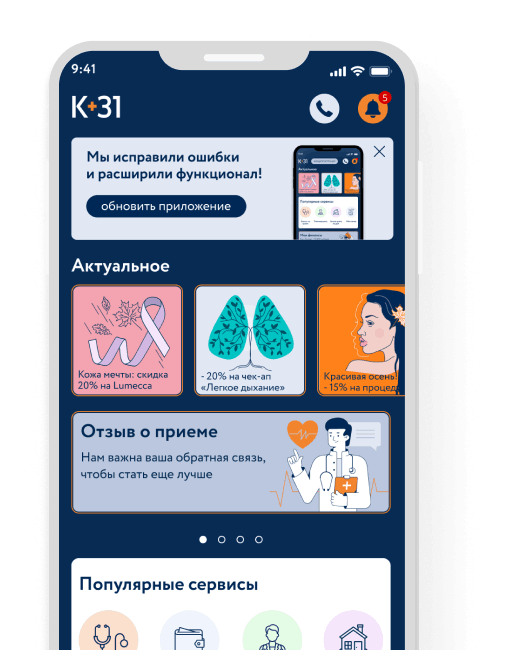
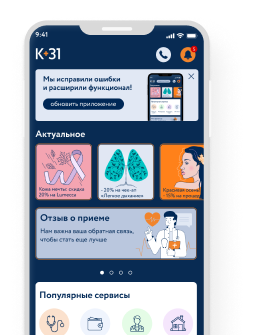



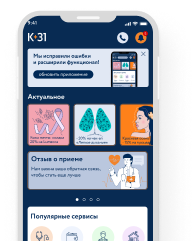













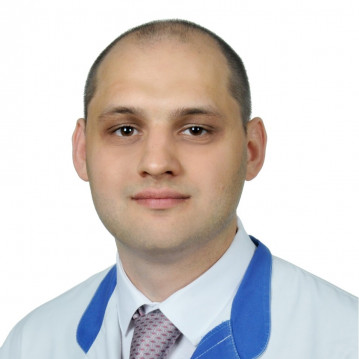





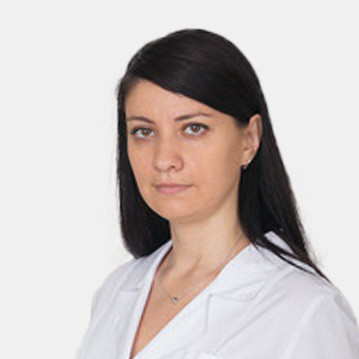



























Definition and general information about PE
Pulmonary embolism is an acute circulatory disorder that occurs when a major blood vessel in the lungs becomes blocked by a blood clot that originally formed elsewhere. This blocks blood flow to the affected area of the lung.
This type of clot does not form directly in the pulmonary vessels, but rather travels from afar, breaking off from a primary clot in another vessel. The spread of such clots throughout the body is called thromboembolism.